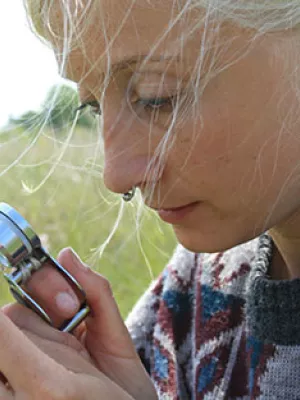
Lina Herbertsson
Researcher

Bees increase seed set of wild plants while the proportion of arable land has a variable effect on pollination in European agricultural landscapes
Author
Summary, in English
Background and aims – Agricultural intensification and loss of farmland heterogeneity have contributed to population declines of wild bees and other pollinators, which may have caused subsequent declines in insect-pollinated wild plants. Material and methods – Using data from 37 studies on 22 pollinator-dependent wild plant species across Europe, we investigated whether flower visitation and seed set of insect-pollinated plants decline with an increasing proportion of arable land within 1 km. Key results – Seed set increased with increasing flower visitation by bees, most of which were wild bees, but not with increasing flower visitation by other insects. Increasing proportion of arable land had a strongly variable effect on seed set and flower visitation by bees across studies. Conclusion – Factors such as landscape configuration, local habitat quality, and temporally changing resource availability (e.g. due to mass-flowering crops or honey bee hives) could have modified the effect of arable land on pollination. While our results highlight that the persistence of wild bees is crucial to maintain plant diversity, we also show that pollen limitation due to declining bee populations in homogenized agricultural landscapes is not a universal driver causing parallel losses of bees and insect-pollinated plants.
Department/s
- Centre for Environmental and Climate Science (CEC)
- BECC: Biodiversity and Ecosystem services in a Changing Climate
- Department of Biology
- Biodiversity and Conservation Science
Publishing year
2021
Language
English
Pages
341-350
Publication/Series
Plant Ecology and Evolution
Volume
154
Issue
3
Document type
Journal article
Publisher
Societe Royale de Botanique de Belgique
Topic
- Ecology
Keywords
- Habitat loss
- Landscape complexity
- Landscape simplification
- Pollinating insects
- Pollination
- Semi-natural
Status
Published
Research group
- Biodiversity and Conservation Science
ISBN/ISSN/Other
- ISSN: 2032-3913